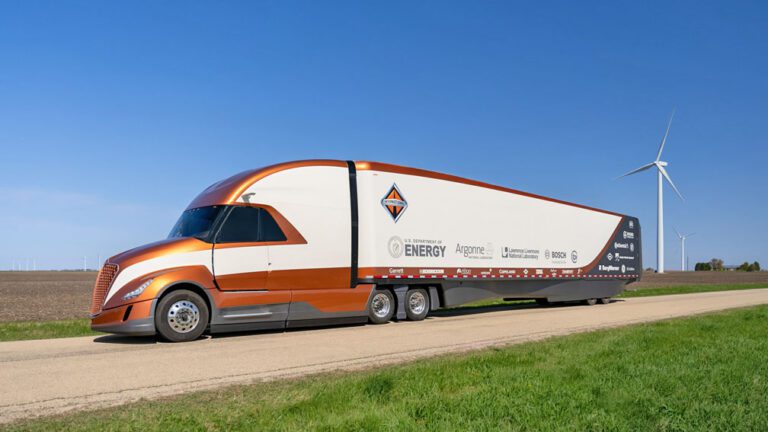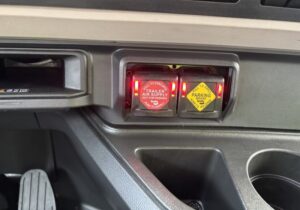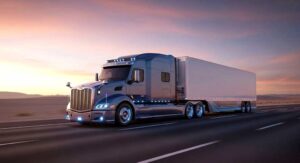LISLE, Ill. — Navistar and the U.S. Department of Energy (DOE) have announced that SuperTruck II has achieved 16 miles per gallon through a series of new technological advances.
In a joint news release, Navistar and DOE said the truck was able to achieve the rating through hybridization and a 170% improvement in freight efficiency, among other advancements over the 2009 baseline vehicle, the International SuperTruck I.
SuperTruck II also included new technical approaches to weight reduction from rolling resistance technologies, aerodynamic improvements and powertrain technologies — all designed to help reduce use of fossil fuels.
With the shared goals of increasing Class 8 vehicle efficiency and reducing the U.S. dependence on fossil fuels, the International SuperTruck II resulted in a demonstration of 170% improvement in vehicle freight efficiency, 55% engine brake thermal efficiency, assessed total ownership costs for individual technologies and high-voltage electrification efforts modeling hybrid technologies that can be utilized for fully electric vehicles.
“With co-funding by the DOE, Navistar engineers experimented with prospective technologies not currently available in the Class 8 truck market to accelerate the impact of sustainable mobility,” said Russ Zukouski, chief engineer of global innovation and principal investigator for the Supertruck programs. “The team concentrated its design on high-voltage electrification, utilizing hybrid technology on a path toward full electrification that has the potential to be commercialized in fully electric vehicles and improve customers’ total cost of ownership (TCO) and business operations.”
SuperTruck II was built as a hybrid vehicle that has a combustion engine with high-voltage accessories and technologies developed in partnership with Bosch. Engine improvements were made in critical areas such as combustion, friction, gas exchange and airflow through the engine.
Compared to the International SuperTruck I, a redesigned cylinder head with a dual overhead cam engine and enhanced fuel system resulted in a 2% fuel economy improvement. After-treatment system improvements, including diesel exhausted fluid (DEF) dosing, improved mixing and lower restrictions, new selective catalytic reduction (SCR) formulations for high-NOx reduction, and reduced cold-start activation time.
Dean Opperman, the chief engineer of Advanced Track, spoke on Navistar.
“Navistar is the only OEM to build a trailer to provide the most accurate testing results possible,” he said. “It includes a 100% composite box designed for minimum aerodynamic drag with lightweight, integrated cross members, controlled underbody flow with composite aero treatments, next-generation solar panels with connectivity options, and ride height control.”
Opperman said the company’s goal “is to continue to advance internal combustion engine technology as efficiently and sustainably as possible until there is parity with zero-emissions vehicles.
“Development of both technologies concurrently ensures a smooth transition of technology to best serve customer needs,” he said. “We are focused on the entire product ecosystem — product development itself, as well as infrastructure charging, service and support of vehicle operation, end of life for batteries.”
The Trucker News Staff produces engaging content for not only TheTrucker.com, but also The Trucker Newspaper, which has been serving the trucking industry for more than 30 years. With a focus on drivers, the Trucker News Staff aims to provide relevant, objective content pertaining to the trucking segment of the transportation industry. The Trucker News Staff is based in Little Rock, Arkansas.















